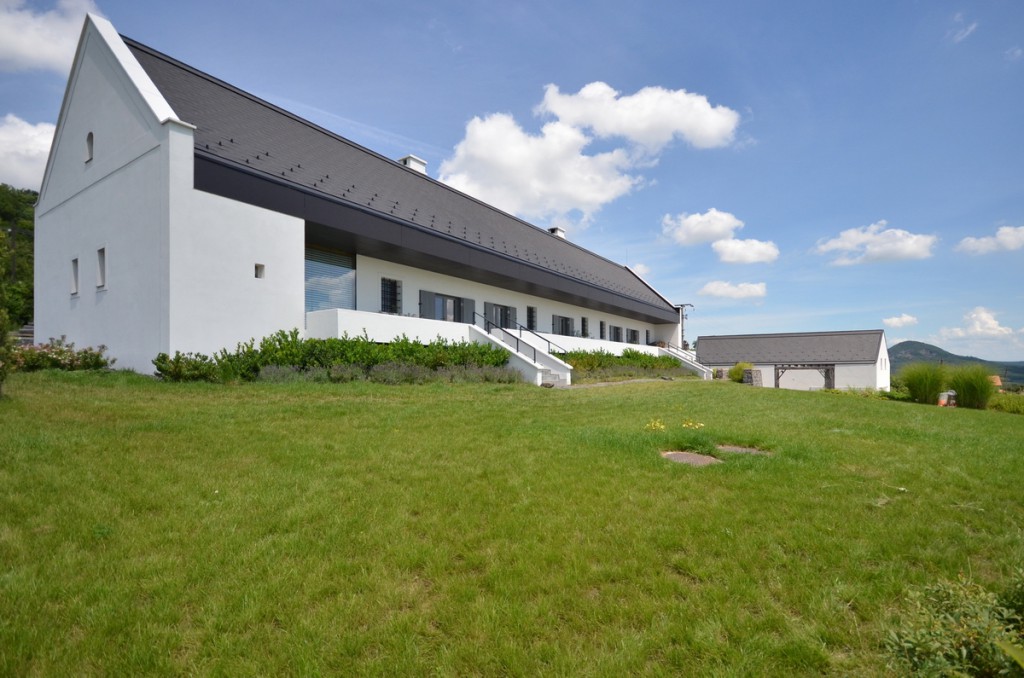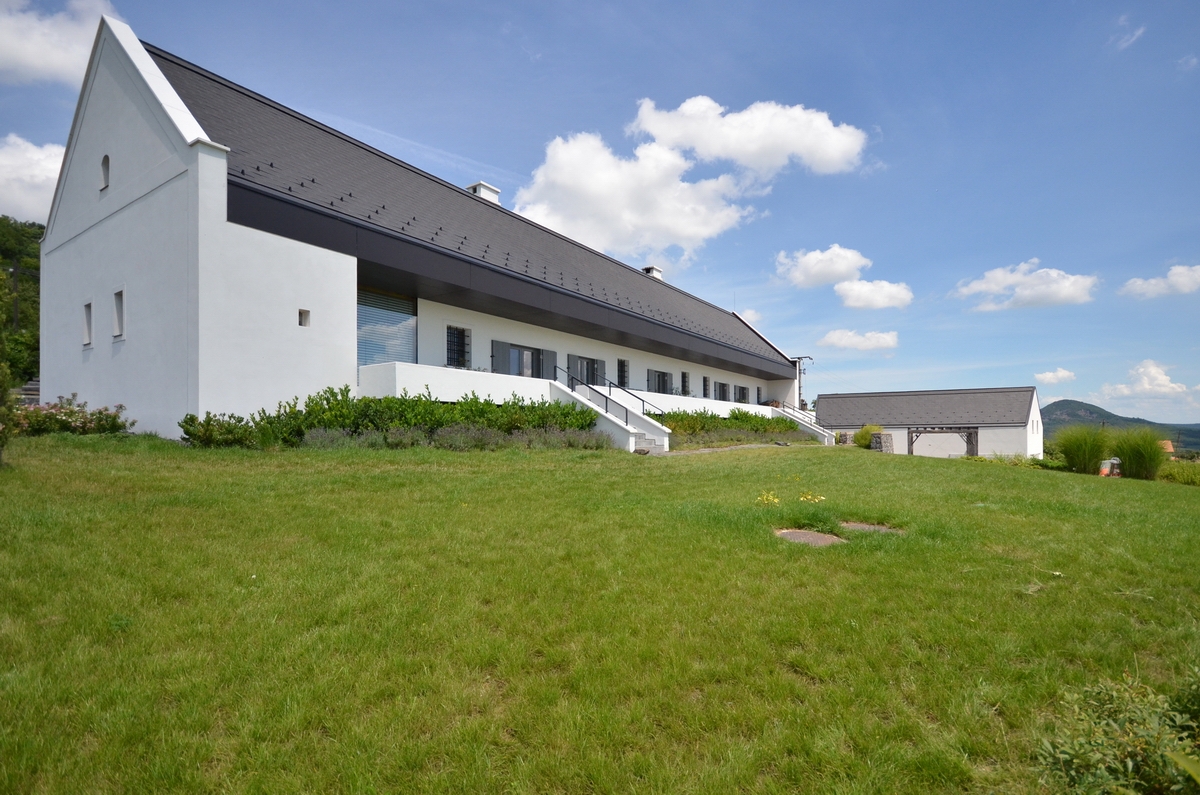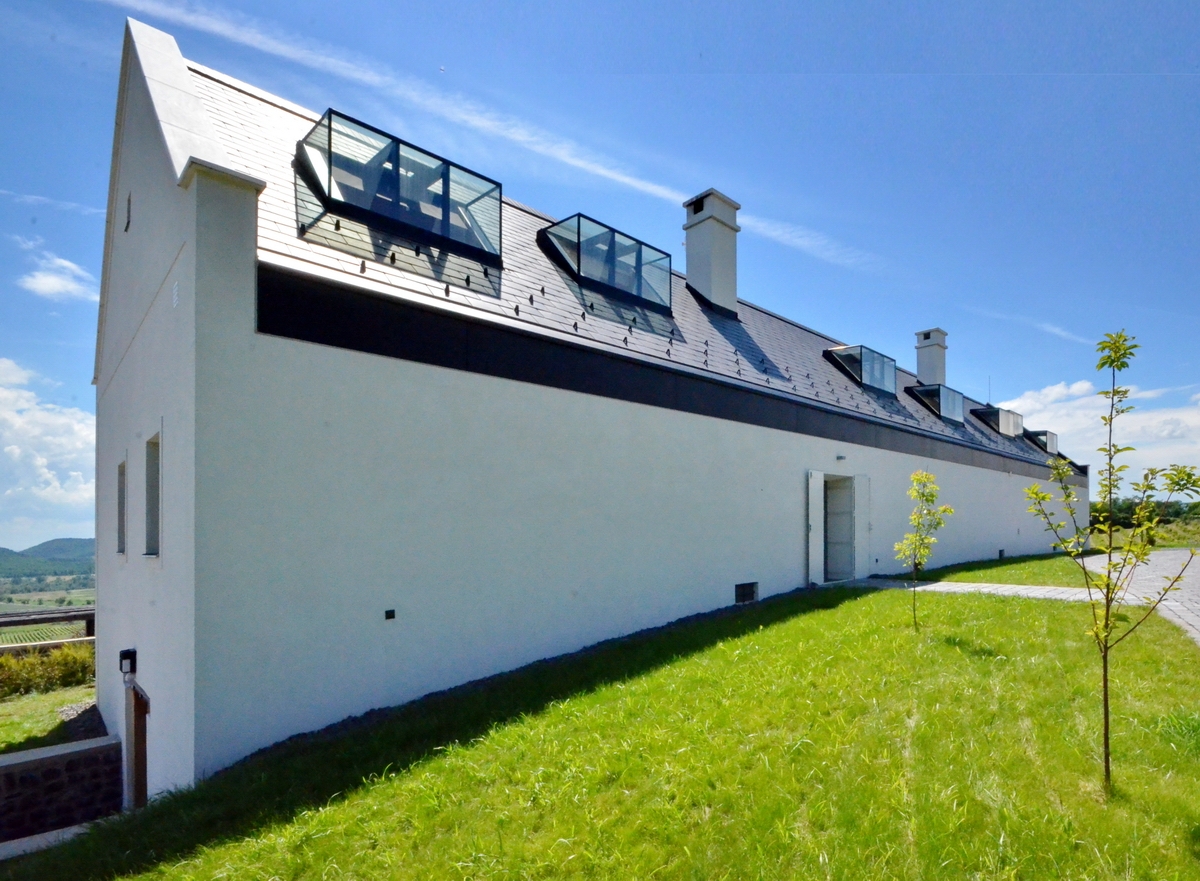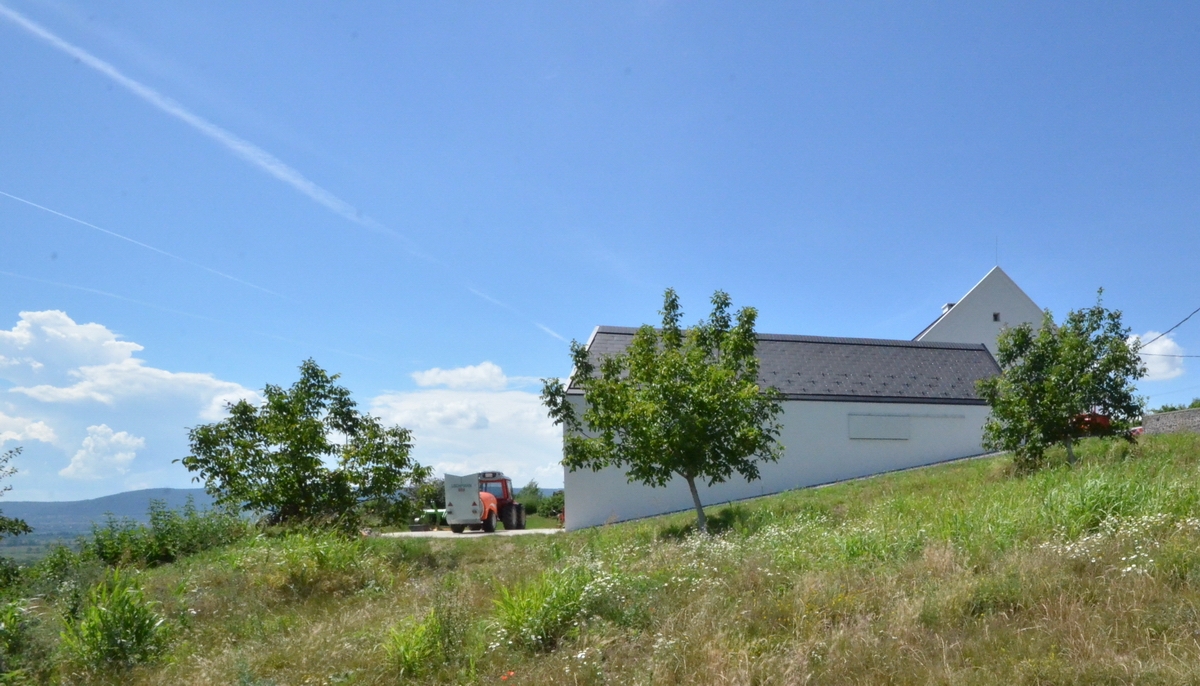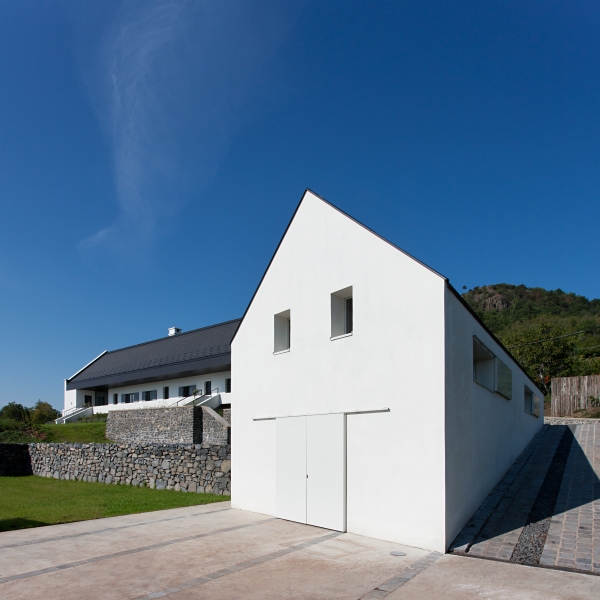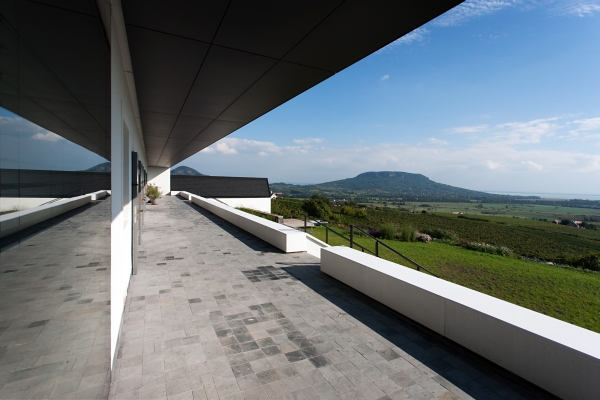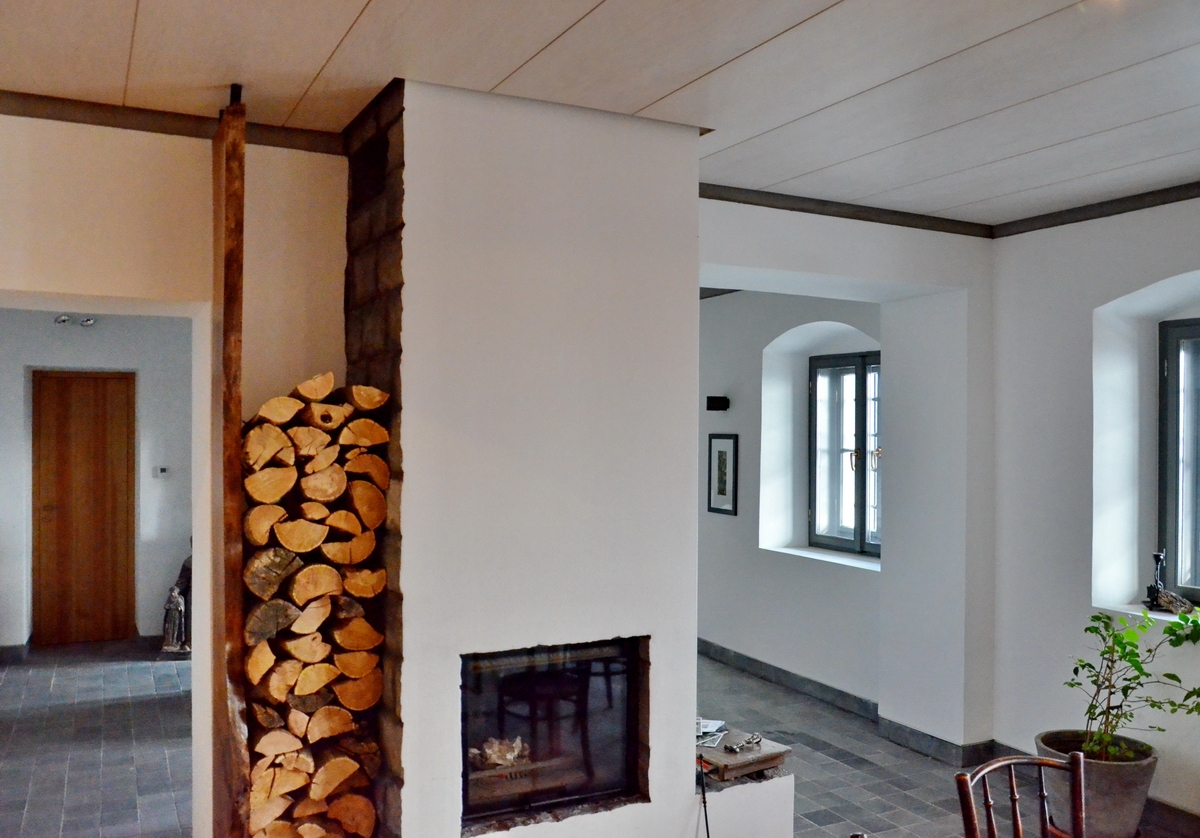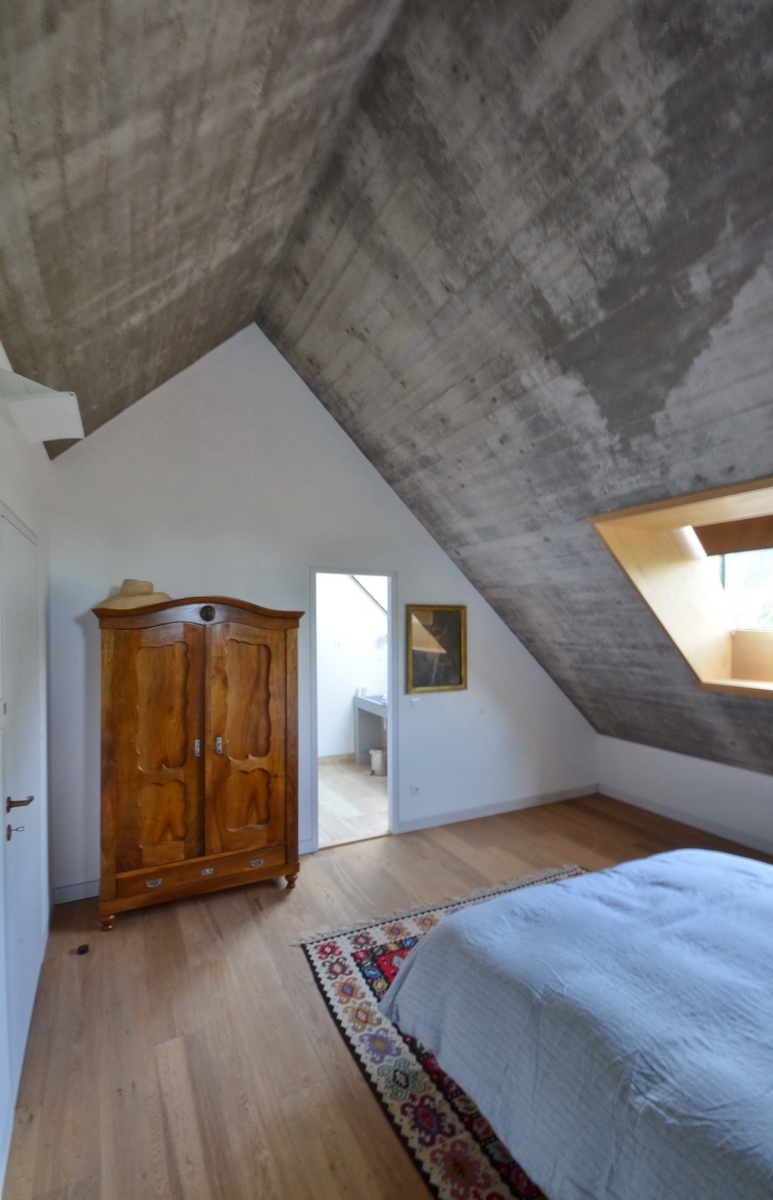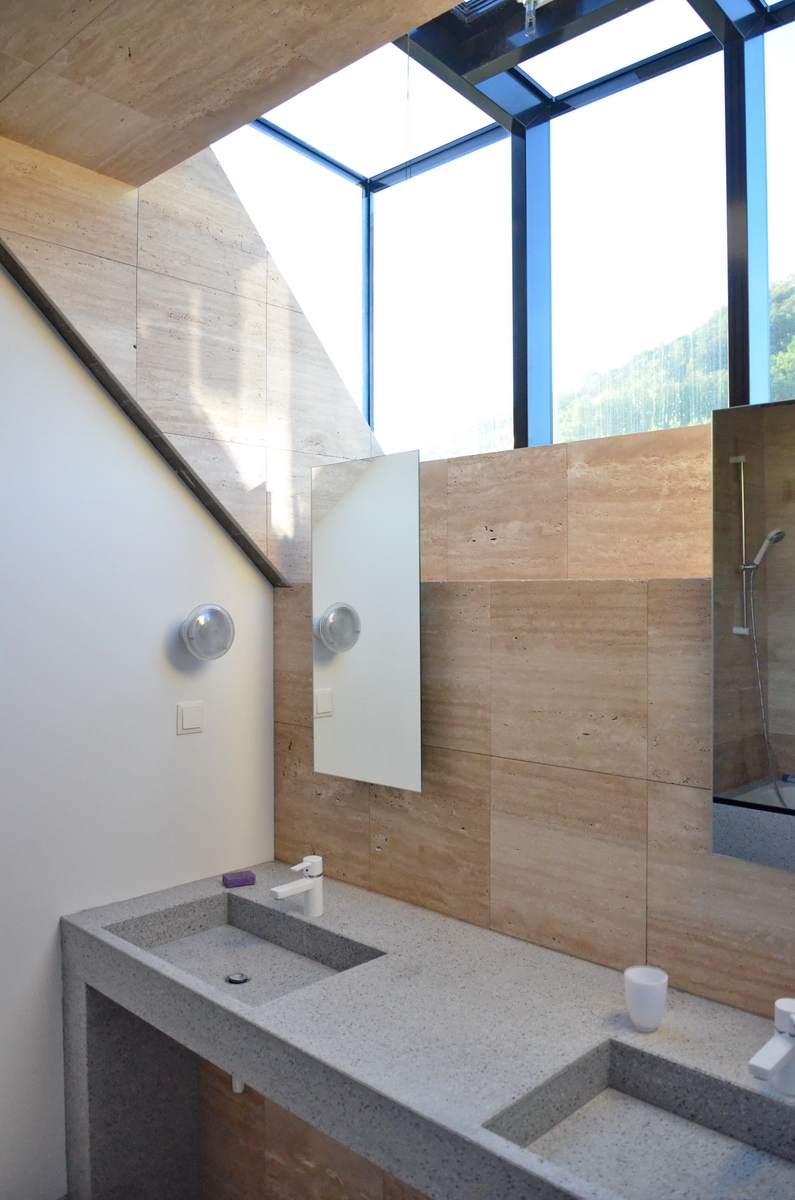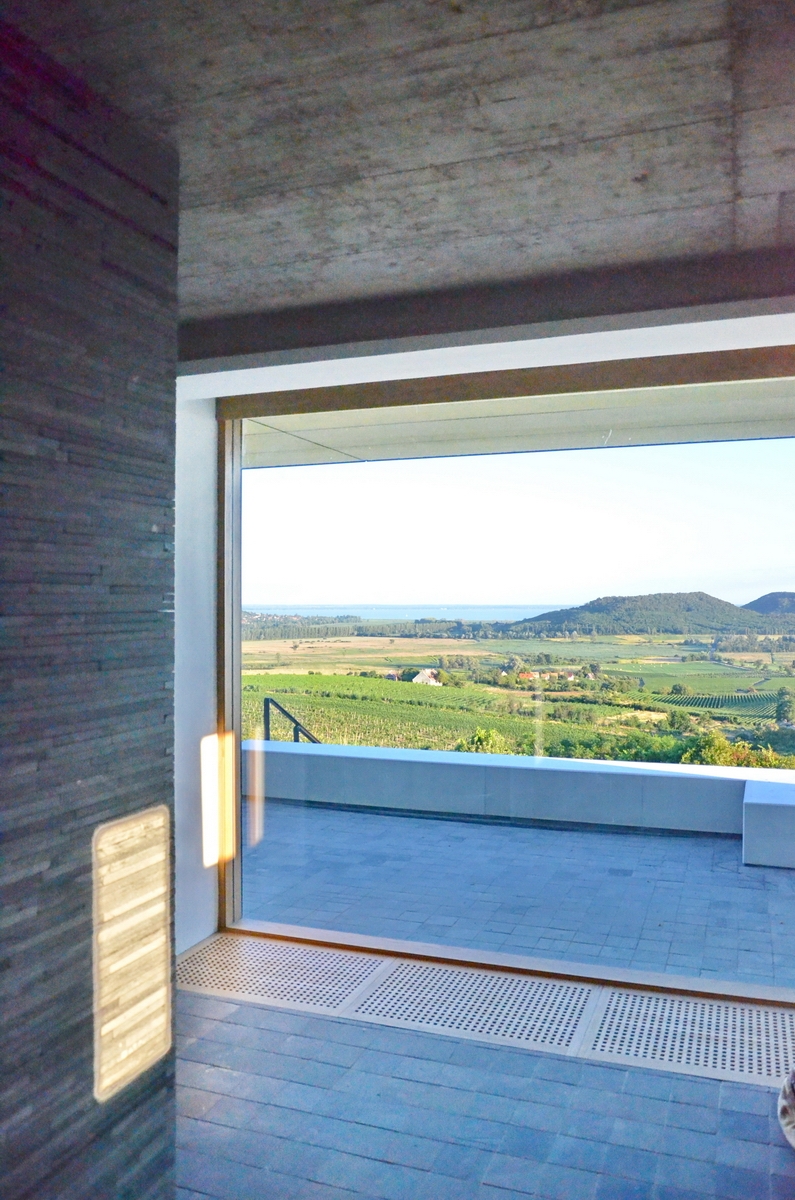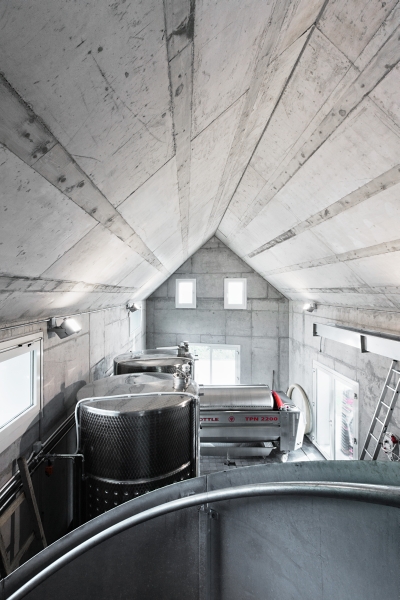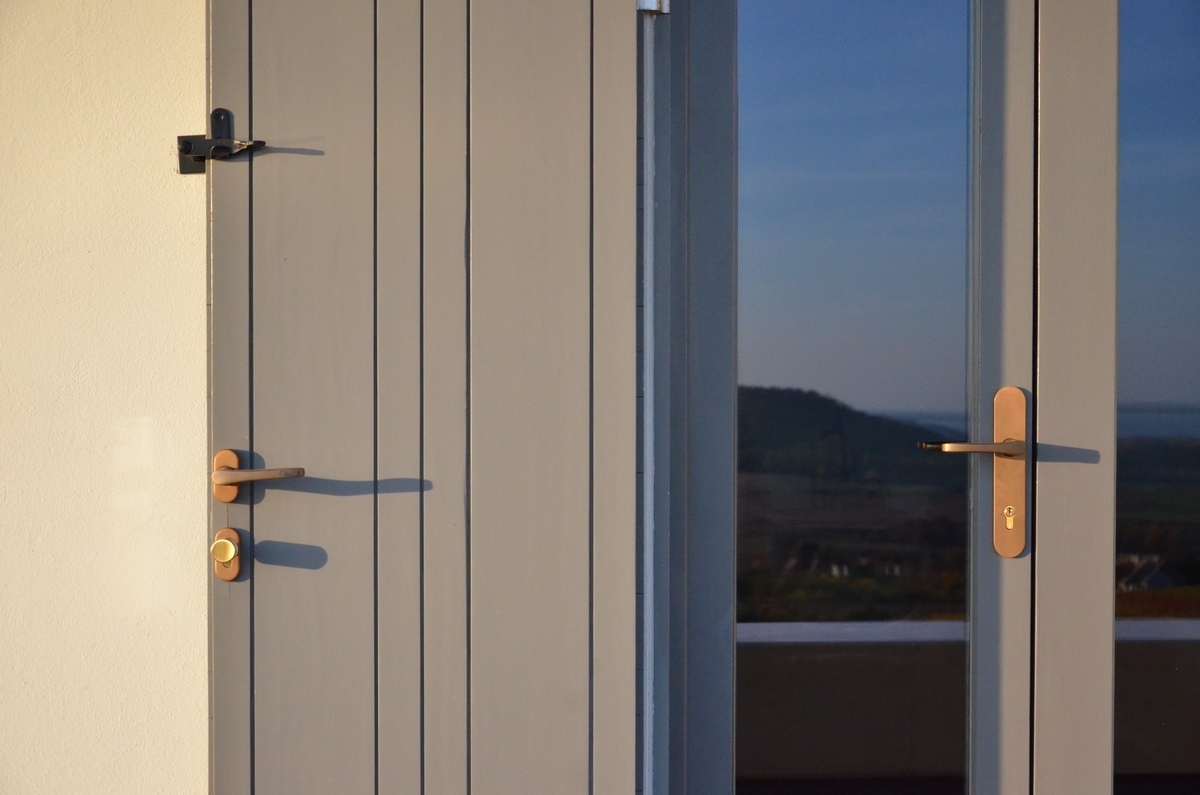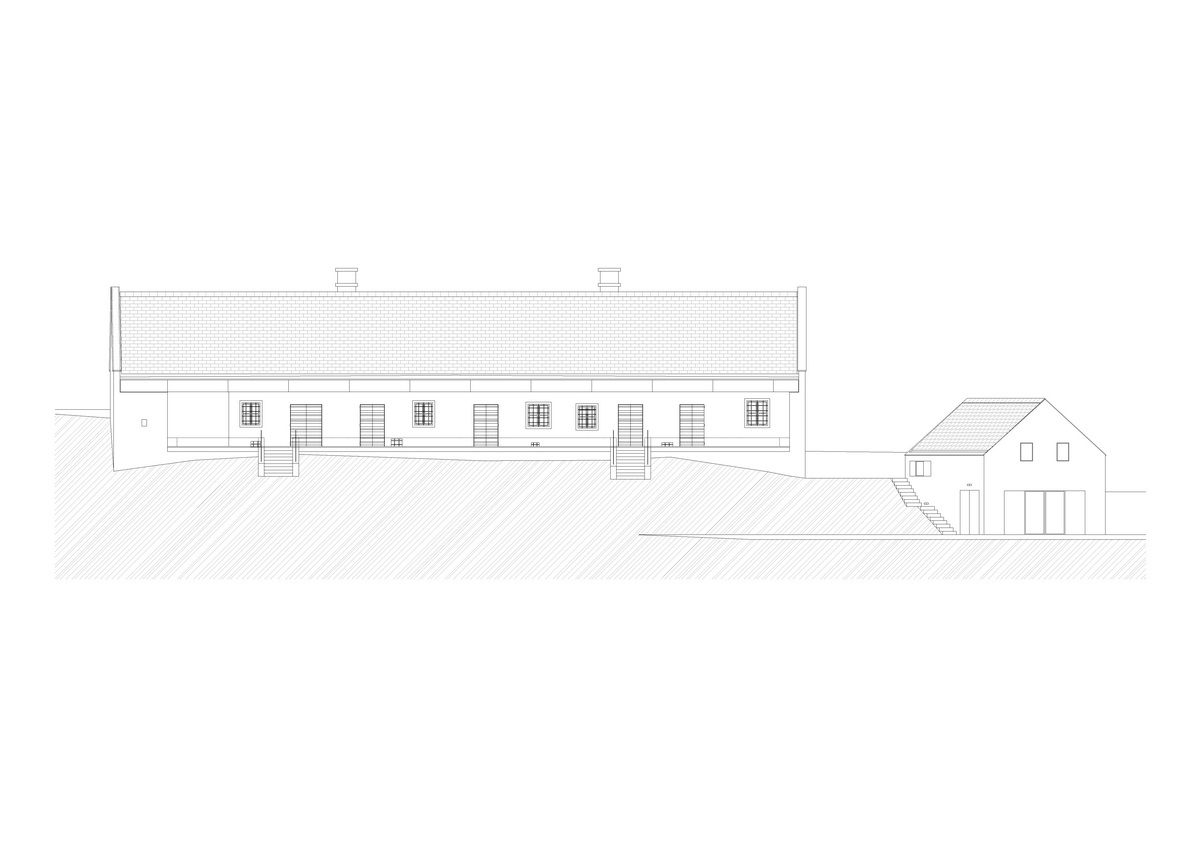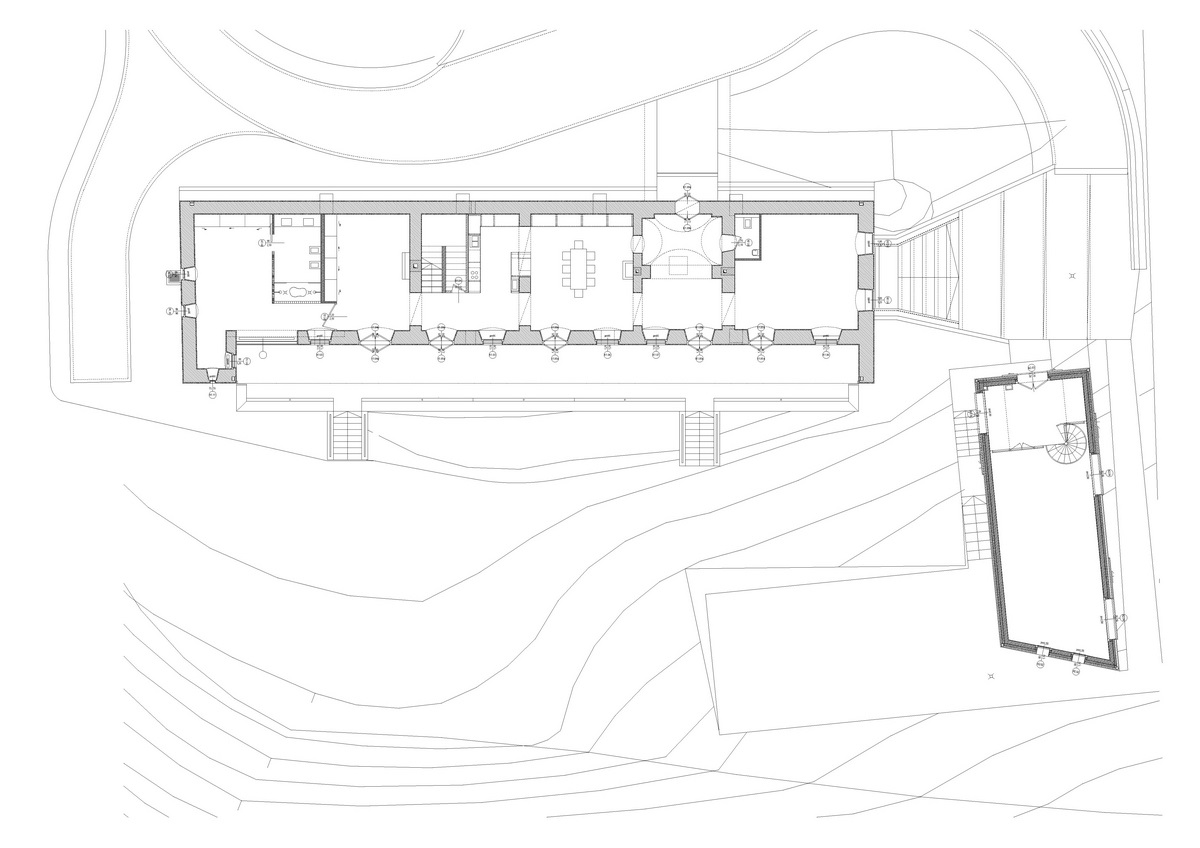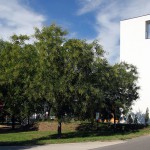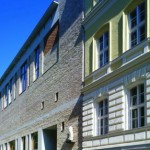One can hardly find a natural environment more original, more insipiring in our country than the slopes of the Balaton Highlands’ monadnocks. The Gilvesy Winery is situated in a monumental environment in the National Park of the Balaton Highlands, at the foot of the Szent György Hill’s whin sills.
- architects: Gábor SAJTOS - SAGRA architects
cooperating architects: Róbert GILVESY, Gabriella GRAND, Péter VIRÁG, Regina NÉMETH - year of design, construction: 2006/2014
- photo: © Gábor SAJTOS, © Tamás BUJNOVSZKY
The press-house and vine-dresser house was built in the beginning of the 19th century as part of the Eszterházy- estate. At its reconstruction and renovation, the architectural concept was based on keeping the unviolated parts of the building and repairing the destroyed parts using tools that are contemporary but are rooted on the original ones.
The former vine-dresser house, functions currently as an accommodation building. The original character, preserved by its retained and renovated cellar, the North-, South- and East-facing walls, West-facing gable, and the inner load-bearing walls, is set off by contemporary details, such as the demolition of the west-facing end section of the South wall that had been walled-up posteriorly and opening it up using glass surface, the pillar–free realization of the porch facing the Balaton, as well as the glass-cubes choreographed on the whin sills. The conceptional interconnection of new and old appears in the traditional spatial organization of the ground floor, too, with an undivided area that takes in the kitchen, the diner, and the main room. Original details like the vaulted space and smoke bell beam of the former “smoky kitchen” appear with fair-faced concrete ceiling and cut whinstone flooring.
The fully reconstructed press-house, with its simple mass configuration and high-ceilinged inner space with fair-faced concrete surface fittingly evoke the past and while leaving headway for the modern technology necessary for quality winemaking. Both buildings have received a whin-colored slate roof which, with the thick eaves, redefines the former cane casing.
translation: András SZÉL
Publications in English:
internet:
- Gábor Sajtos: Winery - Balaton Highland - in: építészfórum, September 29, 2014;
- Winery in Balaton Highland - in: Archdaily, 2014. november 1.
printed:
Data:
- client: Winery Gilvesy
- area: 450 m2
- the building on the homepage of the architects

